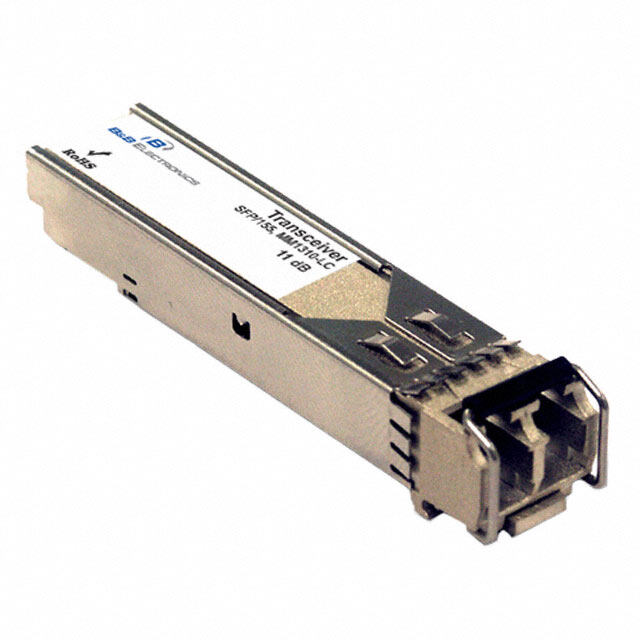ICGOO在线商城 > 光电元件 > 光纤 - 收发器模块 > AFBR-57R5APZ
- 型号: AFBR-57R5APZ
- 制造商: Avago Technologies
- 库位|库存: xxxx|xxxx
- 要求:
| 数量阶梯 | 香港交货 | 国内含税 |
| +xxxx | $xxxx | ¥xxxx |
查看当月历史价格
查看今年历史价格
AFBR-57R5APZ产品简介:
ICGOO电子元器件商城为您提供AFBR-57R5APZ由Avago Technologies设计生产,在icgoo商城现货销售,并且可以通过原厂、代理商等渠道进行代购。 AFBR-57R5APZ价格参考。Avago TechnologiesAFBR-57R5APZ封装/规格:光纤 - 收发器模块, Fiber Optic Transceiver Module 4.25GBd 850nm 3.3V LC Duplex Pluggable, SFP。您可以下载AFBR-57R5APZ参考资料、Datasheet数据手册功能说明书,资料中有AFBR-57R5APZ 详细功能的应用电路图电压和使用方法及教程。
AFBR-57R5APZ 是由 Foxconn Optical Interconnect Technologies, Inc. 生产的一款光纤收发器模块,属于高性能的工业级光通信组件。该模块基于100Gbps以太网标准(100GBASE-SR4),采用MPO-12接口,工作波长为850nm,适用于短距离多模光纤传输,典型传输距离可达100米(在OM4光纤上)。 其主要应用场景包括: 1. 数据中心互联:广泛应用于大型数据中心内部服务器、交换机与路由器之间的高速互连,支持高带宽、低延迟的数据传输,满足云计算、大数据处理等需求。 2. 企业网络骨干:用于高性能企业网络的核心层或汇聚层,提升网络吞吐能力,支持视频会议、虚拟化和存储区域网络(SAN)等高负载应用。 3. 高性能计算(HPC)系统:在超级计算机或集群系统中实现节点间的快速通信,保障并行计算效率。 4. 电信基础设施:适用于5G前传或中传网络中的光信号传输,支持高密度部署和热插拔,便于维护与扩展。 AFBR-57R5APZ具备低功耗、高可靠性及良好的散热设计,符合RoHS环保标准,并通过了严格的质量认证,适合在工业温度范围内稳定运行。其高密度集成特性也使其成为现代光通信系统中理想的短距高速互联解决方案。
| 参数 | 数值 |
| 产品目录 | |
| 描述 | TXRX OPT SFP 4/2/1GBD 850NM光纤发射器、接收器、收发器 Transceiver |
| 产品分类 | 光纤 - 收发器光纤 |
| 品牌 | Avago Technologies US Inc. |
| 产品手册 | http://www.avagotech.com/pages/en/optical_transceivers/storage/4g_fibre_channel/afbr-57r5apz/ |
| 产品图片 | |
| rohs | 符合RoHS无铅 / 符合限制有害物质指令(RoHS)规范要求 |
| 产品系列 | 光纤发射器、接收器、收发器,Avago Technologies AFBR-57R5APZ- |
| mouser_ship_limit | 该产品可能需要其他文件才能进口到中国。 |
| 数据手册 | http://www.avagotech.com/docs/AV02-0881EN |
| 产品型号 | AFBR-57R5APZ |
| 产品 | Transceivers |
| 产品目录页面 | |
| 产品种类 | 光纤发射器、接收器、收发器 |
| 其它名称 | 516-1987 |
| 商标 | Avago Technologies |
| 安装类型 | 可插入式,SFP |
| 封装/箱体 | SFP-20 |
| 工作电源电压 | 3.3 V |
| 工厂包装数量 | 10 |
| 应用 | - |
| 数据速率 | 4.25GBd |
| 最大工作温度 | + 85 C |
| 最小工作温度 | - 10 C |
| 标准包装 | 10 |
| 波长 | 850nm |
| 电压-电源 | 3.3V |
| 纤维类型 | Multimode |
| 连接器类型 | LC 双工 |


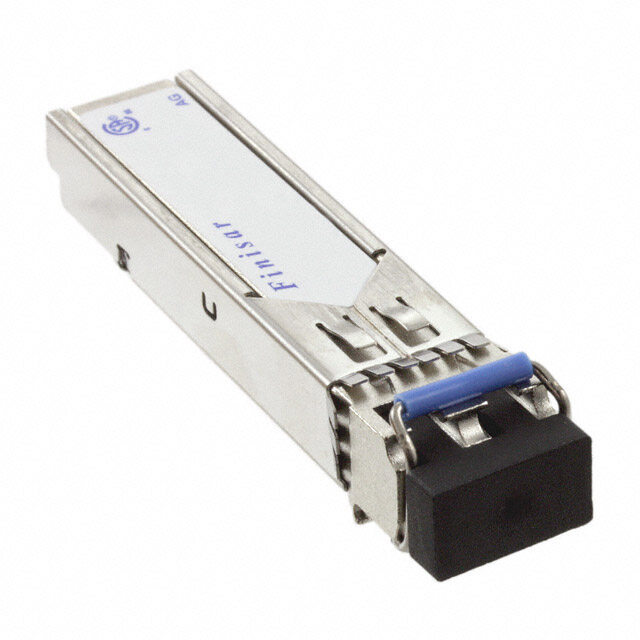
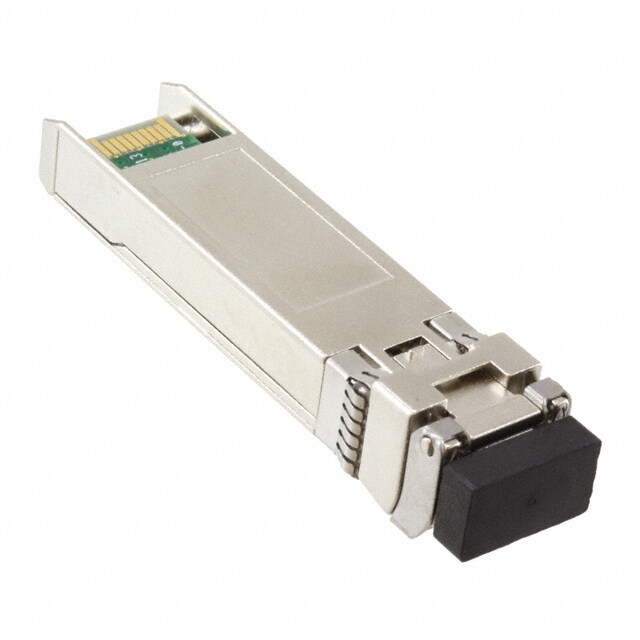


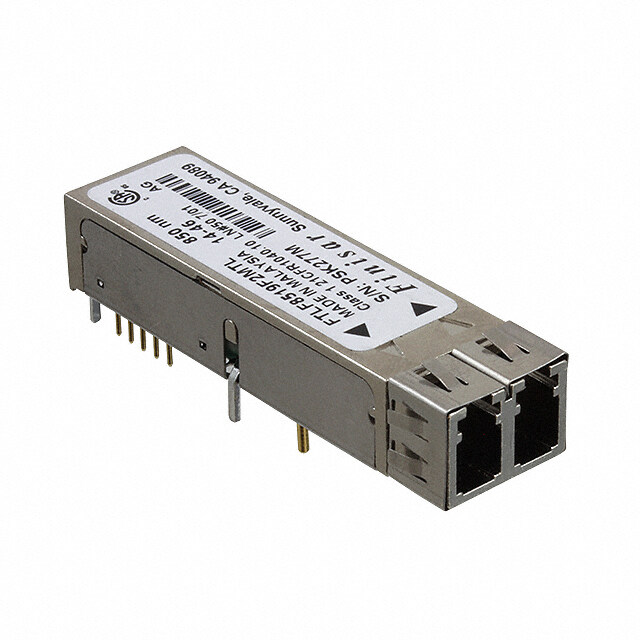


- 商务部:美国ITC正式对集成电路等产品启动337调查
- 曝三星4nm工艺存在良率问题 高通将骁龙8 Gen1或转产台积电
- 太阳诱电将投资9.5亿元在常州建新厂生产MLCC 预计2023年完工
- 英特尔发布欧洲新工厂建设计划 深化IDM 2.0 战略
- 台积电先进制程称霸业界 有大客户加持明年业绩稳了
- 达到5530亿美元!SIA预计今年全球半导体销售额将创下新高
- 英特尔拟将自动驾驶子公司Mobileye上市 估值或超500亿美元
- 三星加码芯片和SET,合并消费电子和移动部门,撤换高东真等 CEO
- 三星电子宣布重大人事变动 还合并消费电子和移动部门
- 海关总署:前11个月进口集成电路产品价值2.52万亿元 增长14.8%




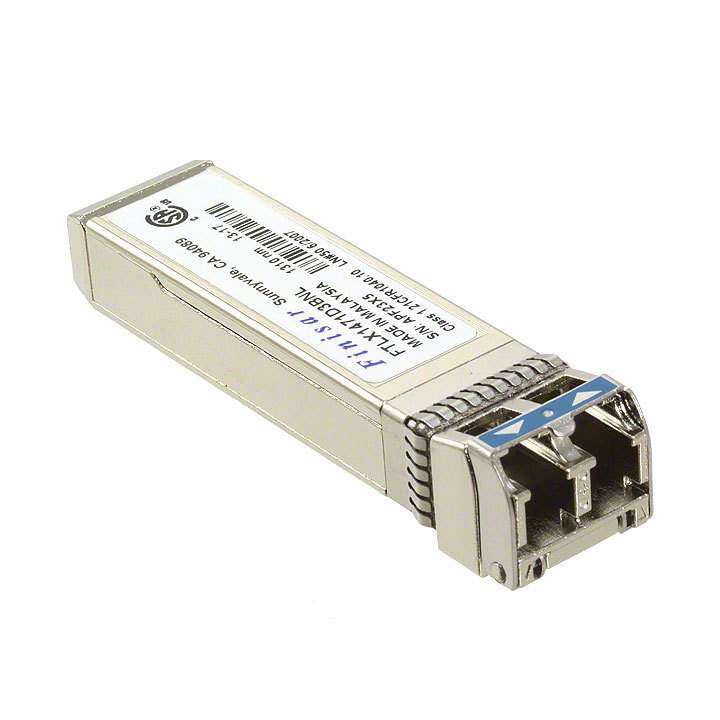
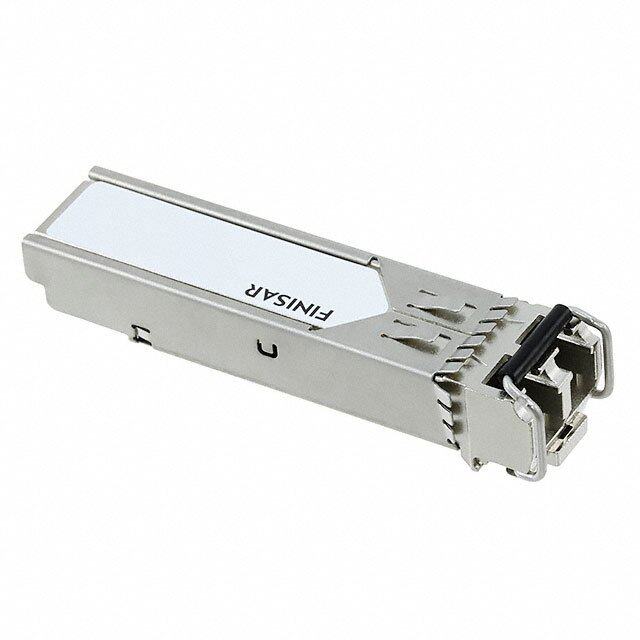
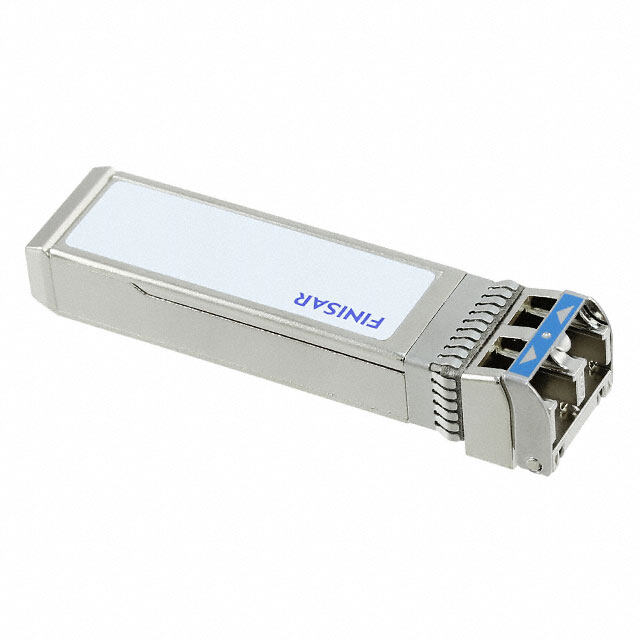
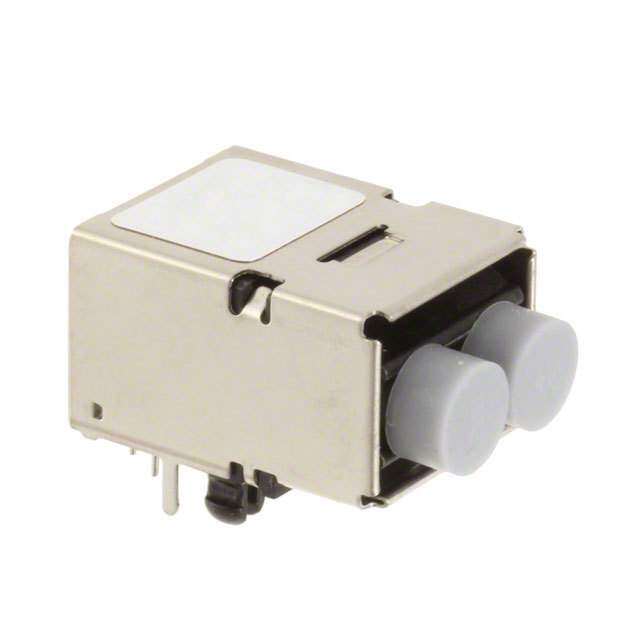
PDF Datasheet 数据手册内容提取
AFBR-57R5APZ Digital Diagnostic SFP, 850 nm, 4.25/2.125/1.0625 GBd, RoHS Compliant Optical Transceiver Data Sheet PPOC-4102-DIAn8F252B01SIRnCS-NmRN5 :GF (L7AAJA)RJP S05OCE4LRAR4 AE P6PS0ZCRS4D1O41D6C Description Features • Fully RoHS Compliant Avago’s AFBR-57R5APZ optical transceiver supports high-speed serial links over multimode optical fiber at • Diagnostic features per SFF-8472 “Diagnostic Moni- signaling rates up to 4.25 Gb/s. Compliant with Small toring Interface for Optical Transceivers” Form Pluggable (SFP) Multi Source Agreement (MSA) • Real time monitoring of: mechanical and electrical specifications for LC Duplex – Transmitted optical power transceivers, ANSI Fibre Channel FC-PI, FC-PI-2 and com- – Received optical power patible with IEEE 802.3 for gigabit applications. The part – Laser bias current is electrically interoperable with SFP conformant devices. – Temperature – Supply voltage As an enhancement to the conventional SFP interface • Wide temperature and supply voltage operation defined in SFF-8074i, the AFBR-57R5APZ is compliant to (-10°C to 85°C) (3.3 V ± 10%) SFF-8472 (digital diagnostic interface for optical trans- ceivers). Using the 2-wire serial interface defined in the • Transceiver specifications per SFP (SFF-8074i) Multi- SFF-8472 MSA, the AFBR-57R5APZ provides real time Source Agree-ment and SFF-8472 (revision 9.3) temperature, supply voltage, laser bias current, laser – 4.25 GBd Fibre Channel operation for average output power and received input power. This FC-PI 400-M5-SN-I and 400-M6-SN-I information is in addition to conventional SFP base data. – 2.125 GBd Fibre Channel operation for The digital diagnostic interface also adds the ability to FC-PI 200-M5-SN-I and 200-M6-SN-I disable the transmitter (TX_DISABLE), monitor for Trans- – 1.0625 GBd Fibre Channel operation for mitter Faults (TX_FAULT), and monitor for Receiver Loss FC-PI 100-M5-SN-I and 100-M6-SN-I of Signal (RX_LOS). • Link lengths at 4.25 GBd: – 150 m with 50 µm MMF, 70 m with 62.5 µm MMF Applications • Link lengths at 2.125 GBd: • Fibre channel systems – 300 m with 50 µm MMF, 150 m with 62.5 µm MMF – Director class switches • Link lengths at 1.0625 GBd: – Fabric switches – 500 m with 50 µm MMF, 300 m with 62.5 µm MMF – HBA cards • LC Duplex optical connector interface conforming to ANSI TIA/EIA604-10 (FOCIS 10) • Disk and tape drive arrays • 850 nm Vertical Cavity Surface Emitting Laser (VCSEL) Related Products source technology • AFBR-59R5LZ: 850 nm +3.3 V LC SFF 2x7 for • IEC 60825-1 Class 1/CDRH Class 1 laser eye safe 4.25/2.125/1.0625 GBd Fibre Channel • Compatible with Gigabit Ethernet Patent - www.avagotech.com/patents
Installation Compliance Prediction The AFBR-57R5APZ can be installed in any SFF-8074i Compliance prediction is the ability to determine if an compliant Small Form Pluggable (SFP) port regardless of optical transceiver is operating within its operating and host equipment operating status. The AFBR-57R5APZ is environmental requirements. AFBR-57R5APZ devices hot-pluggable, allowing the module to be installed while provide real-time access to transceiver internal supply the host system is operating and on-line. Upon insertion, voltage and temperature, allowing a host to identify the transceiver housing makes initial contact with the potential component compliance issues. Received host board SFP cage, mitigating potential damage due optical power is also available to assess compliance of to Electro-Static Discharge (ESD). a cable plant and remote transmitter. When operating out of requirements, the link cannot guarantee error free Digital Diagnostic Interface and Serial Identification transmission. The 2-wire serial interface is based on ATMEL AT24C01A Fault Isolation series EEPROM protocol and signaling detail. Conven- tional EEPROM memory, bytes 0-255 at memory address The fault isolation feature allows a host to quickly 0xA0, is organized in compliance with SFF-8074i. New pinpoint the location of a link failure, minimizing digital diag nostic information, bytes 0-255 at memory downtime. For optical links, the ability to identify a fault address 0xA2, is compliant to SFF-8472. The new diag- at a local device, remote device or cable plant is crucial nostic information provides the opportunity for Predic- to speeding service of an installation. AFBR-57R5APZ tive Failure Identification, Com pliance Prediction, Fault real-time monitors of Tx_Bias, Tx_Power, Vcc, Temperature Isolation and Component Monitoring. and Rx_Power can be used to assess local transceiver current operating conditions. In addition, status flags The I2C accessible memory page address 0xB0 is used Tx_Disable and Rx Loss of Signal (LOS) are mirrored in internally by SFP for the test and diagnostic purposes memory and available via the two-wire serial interface. and it is reserved. Component Monitoring Predictive Failure Identification Component evaluation is a more casual use of the The AFBR-57R5APZ predictive failure feature allows a AFBR-57R5APZ real-time monitors of Tx_Bias, Tx_Power, host to identify potential link problems before system Vcc, Temperature and Rx_Power. Potential uses are as performance is impacted. Prior identification of link debugging aids for system installation and design, and problems enables a host to service an application via transceiver parametric evaluation for factory or field “fail over” to a redundant link or replace a suspect device, qualification. For example, temperature per module can maintaining system uptime in the process. For applica- be observed in high density applications to facilitate tions where ultra-high system uptime is required, a digital thermal evaluation of blades, PCI cards and systems. SFP provides a means to monitor two real-time laser metrics assoc iated with observing laser degradation and predicting failure: average laser bias current (Tx_Bias) and average laser optical power (Tx_Power). 2
OPTICAL INTERFACE ELECTRICAL INTERFACE RECEIVER RD+ (RECEIVE DATA) AMPLIFICATION LIGHT FROM FIBER PHOTO-DETECTOR & QUANTIZATION RD– (RECEIVE DATA) Rx LOSS OF SIGNAL MOD-DEF2 (SDA) CONTROLLER & MEMORY MOD-DEF1 (SCL) MOD-DEF0 TRANSMITTER TX_DISABLE LASER DRIVER & TD+ (TRANSMIT DATA) LIGHT TO FIBER VCSEL SAFETY TD– (TRANSMIT DATA) CIRCUITRY TX_FAULT Figure 1. Transceiver functional diagram. Transmitter Section Transmit Fault (Tx_Fault) The transmitter section includes consists of the Transmit- A catastrophic laser fault will activate the transmitter ter Optical SubAssembly (TOSA) and laser driver circuitry. signal, TX_FAULT, and disable the laser. This signal is The TOSA, containing an 850 nm VCSEL (Vertical Cavity an open collector output (pull-up required on the host Surface Emitting Laser) light source, is located at the board). A low signal indicates normal laser operation optical interface and mates with the LC optical connector. and a high signal indicates a fault. The TX_FAULT will The TOSA is driven by a custom IC which uses the be latched high when a laser fault occurs and is cleared incoming differential high speed logic signal to modulate by toggling the TX_DISABLE input or power cycling the the laser diode driver current. This Tx laser driver circuit transceiver. The transmitter fault condition can also be regulates the optical power at a constant level provided monitored via the two-wire serial interface (address A2, the incoming data pattern is dc balanced (8B/10B code, byte 110, bit 2). for example). Eye Safety Circuit Transmit Disable (Tx_Disable) The AFBR-57R5APZ provides Class 1 (single fault tolerant) The AFBR-57R5APZ accepts a TTL and CMOS compat- eye safety by design and has been tested for compliance ible transmit disable control signal input (pin 3) which with the requirements listed in Table 1. The eye safety shuts down the transmitter optical output. A high signal circuit continuously monitors the optical output power implements this function while a low signal allows level and will disable the transmitter upon detecting an normal transceiver operation. In the event of a fault (e.g. unsafe condition beyond the scope of Class 1 certifica- eye safety circuit activated), cycling this control signal tion. Such unsafe conditions can be due to inputs from resets the module as depicted in Figure 4. An internal the host board (Vcc fluctuation, unbalanced code) or a pull up resistor disables the transceiver transmitter until fault within the transceiver. the host pulls the input low. Host systems should allow Receiver Section a 10 ms interval between successive assertions of this control signal. Tx_Disable can also be asserted via the The receiver section includes the Receiver Optical Sub- two-wire serial interface (address A2h, byte 110, bit 6) Assembly (ROSA) and the amplification/quantization and monitored (address A2h, byte 110, bit 7). circuitry. The ROSA, containing a PIN photodiode and The contents of A2h, byte 110, bit 6 are logic OR’d with custom transimpedance amplifier, is located at the hardware Tx_Disable (pin 3) to control transmitter optical interface and mates with the LC optical connector. operation. The ROSA output is fed to a custom IC that provides post- amplification and quantization. 3
Receiver Loss of Signal (Rx_LOS) Caution The post-amplification IC also includes transition There are no user serviceable parts nor maintenance detection circuitry which monitors the ac level of requirements for the AFBR-57R5APZ. All mechanical incoming optical signals and provides a TTL/CMOS adjustments are made at the factory prior to shipment. compatible status signal to the host (pin 8). An adequate Tampering with, modifying, misusing or improp- optical input results in a low Rx_LOS output while a high erly handling the AFBR-57R5APZ will void the product Rx_LOS output indicates an unusable optical input. The warranty. It may also result in improper operation Rx_LOS thresholds are factory set so that a high output and possibly overstress the laser source. Performance indicates a definite optical fault has occurred. Rx_LOS degrada tion or device failure may result. Connection of can also be monitored via the two-wire serial interface the AFBR-57R5APZ to a light source not compliant with (address A2h, byte 110, bit 1). ANSI FC-PI or IEEE 802.3 specifications, operating above maximum operating conditions or in a manner inconsis- Functional Data I/O tent with it’s design and function may result in exposure to hazardous light radiation and may constitute an act The AFBR-57R5APZ interfaces with the host circuit board of modifying or manufacturing a laser product. Persons through twenty I/O pins (SFP electrical connector) iden- performing such an act are required by law to re-certify tified by function in Table 2. The board layout for this and re-identify the laser product under the provisions of interface is depicted in Figure 6. U.S. 21 CFR (Subchapter J) and TUV. The AFBR-57R5APZ high speed transmit and receive interfaces require SFP MSA compliant signal lines on Regulatory Compliance the host board. To simplify board requirements, biasing The AFBR-57R5APZ complies with all applicable laws resistors and ac coupling capacitors are incorporated into and regulations as detailed in Table 1. Certification level the SFP transceiver module (per SFF-8074i) and hence are is dependent on the overall configuration of the host not required on the host board. The Tx_Disable, Tx_Fault, equipment. The transceiver performance is offered as a and Rx_LOS lines require TTL lines on the host board (per figure of merit to assist the designer. SFF-8074i) if used. If an application chooses not to take advantage of the functionality of these pins, care must Electrostatic Discharge (ESD) be taken to ground Tx_Disable (for normal operation). The AFBR-57R5APZ is compatible with ESD levels found Figure 2 depicts the recom mended interface circuit to in typical manufacturing and operating environments link the AFBR-57R5APZ to supporting physical layer ICs. as described in Table 1. In the normal handling and Timing for MSA compliant control signals implemented operation of optical transceivers, ESD is of concern in two in the transceiver are listed in Figure 4. circumstances. Application Support The first case is during handling of the transceiver prior to insertion into an SFP compliant cage. To protect the An Evaluation Kit and Reference Designs are available to device, it’s important to use normal ESD handling pre- assist in evaluation of the AFBR-57R5APZ. Please contact cautions. These include use of grounded wrist straps, your local Field Sales representative for availability and work-benches and floor wherever a transceiver is ordering details. handled. Ordering Information The second case to consider is static discharges to the exterior of the host equipment chassis after installation. Please contact your local field sales engineer or one of If the optical interface is exposed to the exterior of host Avago Technologies franchised distributors for ordering equipment cabinet, the transceiver may be subject to information. For technical information, please visit Avago system level ESD requirements. Technologies’ WEB page at www.avagotech.com or contact Avago Technologies Semiconductor Products Customer Response Center at 1-800-235-0312. For information related to SFF Committee documentation visit www. sffcommittee.org. 4
Electromagnetic Interference (EMI) EMI Immunity (Susceptibility) Equipment incorporating gigabit transceivers is typically Due to its shielded design, the EMI immunity of the AFBR- subject to regulation by the FCC in the United States, 57R5APZ exceeds typical industry standards. CENELEC EN55022 (CISPR 22) in Europe and VCCI Flammability in Japan. The AFBR-57R5APZ’s compliance to these standards is detailed in Table 1. The metal housing and The AFBR-57R5APZ optical transceiver is made of metal shielded design of the AFBR-57R5APZ minimizes the EMI and high strength, heat resistant, chemical resistant and challenge facing the equipment designer. UL 94V-0 flame retardant plastic. Table 1. Regulatory Compliance Feature Test Method Performance Electrostatic Discharge (ESD) MIL-STD-883C Class 1 (> 2000 Volts) to the Electrical Pins Method 3015.4 Electrostatic Discharge (ESD) Variation of IEC 61000-4-2 Typically, no damage occurs with 25 kV when to the Duplex LC Receptacle the duplex LC connector receptacle is contacted by a Human Body Model probe. GR1089 10 contacts of 8 kV on the electrical faceplate with device inserted into a panel. Electrostatic Discharge (ESD) Variation of IEC 801-2 Air discharge of 15 kV (min.) contact to to the Optical Connector connector without damage. Electromagnetic Interference FCC Class B System margins are dependent on customer (EMI) CENELEC EN55022 Class B board and chassis design. (CISPR 22A) VCCI Class 1 Immunity Variation of IEC 61000-4-3 Typically shows no measurable effect from a 10 V/m field swept from 10 MHz to 1 GHz. Laser Eye Safety and US FDA CDRH AEL Class 1 CDRH certification # 9720151-55 Equipment Type Testing US21 CFR, Subchapter J per TUV file # 72042669 Paragraphs 1002.10 BAUART and 1002.12 GEPRU¨FT (IEC) EN60825-1: 1994 + A11 + A2 TU¨V Rheinland TYPE (IEC) EN60825-2: 1994 + A1 Product Safety APPROVED (IEC) EN60950: 1992 + A1 + A2 + A3 + A4 + A11 Component Recognition Underwriters Laboratories and UL File # E173874 Canadian Standards Association Joint Component Recognition for Information Technology Equipment including Electrical Business Equipment RoHS Compliance Less than 1000 ppm of cadmium, lead, mercury, hexavalent chromium, polybrominated biphe nyls, and polybrominated biphenyl ethers. 5
VCC,T GND,T 6.8 kΩ Tx DIS Tx_DISABLE Tx FAULT Tx_FAULT 0.01 µF TD+ 100 Ω TD– 0.01 µF LASER DRIVER 4.7 k to 10 kΩ 1 µH VCC,T 0.1 µF 3.3 V PROTOCOL IC SERDES IC 10 µF 0.1 µF 1 µH VCC,R VCC,R VCC,R 10 µF 0.1 µF 50 Ω 4.7 k to 10 kΩ 50 Ω 0.01 µF RD+ 100 Ω RD– 0.01 µF Rx LOS LOSS OF SIGNAL POST AMPLIFIER 3.3 V GND,R 4.7 k to 10 kΩ 4.7 k to 10 kΩ 4.7 k to 10 kΩ MOD_DEF0 MOD_DEF1 MOD_DEF2 MODULE DETECT SCL SDA Figure 2. Typical application configuration. 1 µH VCCT 0.1 µF 1 µH VCCR 3.3 V 0.1 µF 10 µF 0.1 µF 10 µF SFP MODULE HOST BOARD NOTE: INDUCTORS MUST HAVE LESS THAN 1 Ω SERIES RESISTANCE TO LIMIT VOLTAGE DROP TO THE SFP MODULE. Figure 3. Recommended power supply filter. 6
Table 2. Pin Description Pin Name Function/Description Notes 1 VeeT Transmitter Ground 2 TX_FAULT Transmitter Fault Indication – High indicates a fault condition Note 1 3 TX_DISABLE Transmitter Disable – Module electrical input disables on high or open Note 2 4 MOD-DEF2 Module Definition 2 – Two wire serial ID interface data line (SDA) Note 3 5 MOD-DEF1 Module Definition 1 – Two wire serial ID interface clock line (SCL) Note 3 6 MOD-DEF0 Module Definition 0 – Grounded in module (module present indicator) Note 3 7 N.C. 8 RX_LOS Loss of Signal – High indicates loss of received optical signal Note 4 9 VeeR Receiver Ground 10 VeeR Receiver Ground 11 VeeR Receiver Ground 12 RD- Inverse Received Data Out Note 5 13 RD+ Received Data Out Note 5 14 VeeR Receiver Ground 15 VccR Receiver Power + 3.3 V Note 6 16 VccT Transmitter Power + 3.3 V Note 6 17 VeeT Transmitter Ground 18 TD+ Transmitter Data In Note 7 19 TD- Inverse Transmitter Data In Note 7 20 VeeT Transmitter Ground Notes: 1. TX_FAULT is an open collector/drain output, which must be pulled up with a 4.7 k – 10 kΩ resistor on the host board. When high, this output indicates a laser fault of some kind. Low indicates normal operation. In the low state, the output will be pulled to < 0.8 V. 2. TX_DISABLE is an input that is used to shut down the transmitter optical output. It is internally pulled up (within the transceiver) with a 6.8 kΩ resistor. Low (0 – 0.8 V): Transmitter on Between (0.8 V and 2.0 V): Undefined High (2.0 – Vcc max) or OPEN: Transmitter Disabled 3. The signals Mod-Def 0, 1, 2 designate the two wire serial interface pins. They must be pulled up with a 4.7 k – 10 kΩ resistor on the host board. Mod-Def 0 is grounded by the module to indicate the module is present Mod-Def 1 is serial clock line (SCL) of two wire serial interface Mod-Def 2 is serial data line (SDA) of two wire serial interface 4. RX_LOS (Rx Loss of Signal) is an open collector/drain output that must be pulled up with a 4.7 k – 10 kΩ resistor on the host board. When high, this output indicates the received optical power is below the worst case receiver sensitivity (as defined by the standard in use). Low indicates normal operation. In the low state, the output will be pulled to < 0.8 V. 5. RD-/+ designate the differential receiver outputs. They are AC coupled 100 Ω differential lines which should be terminated with 100 Ω differ- ential at the host SERDES input. AC coupling is done inside the transceiver and is not required on the host board. The voltage swing on these lines will be between 600 and 1600 mV differential (300 – 800 mV single ended) when properly terminated. 6. VccR and VccT are the receiver and transmitter power supplies. They are defined at the SFP connector pin. The maximum supply current is 300 mA and the associated in-rush current will typically be no more than 30 mA above steady state after 2 microseconds. 7. TD-/+ designate the differential transmitter inputs. They are AC coupled differential lines with 100 Ω differential termination inside the module. The AC coupling is done inside the module and is not required on the host board. The inputs will accept differential swings of 400 – 2400 mV (200 – 1200 mV single ended), though it is recommended that values between 500 and 1200 mV differential (250 – 600 mV single ended) be used for best EMI performance. 7
Table 3. Absolute Maximum Ratings Parameter Symbol Minimum Maximum Unit Notes Storage Temperature T -40 100 C Note 1, 2 S Case Operating Temperature T -40 100 C Note 1, 2 C Relative Humidity RH 5 95 % Note 1 Supply Voltage Vcc -0.5 3.8 V Note 1, 2, 3 T, R Low Speed Input Voltage V -0.5 Vcc+0.5 V Note 1 IN Notes; 1. Absolute Maximum Ratings are those values beyond which damage to the device may occur if these limits are exceeded for other than a short period of time. See Reliability Data Sheet for specific reliability performance. 2. Between Absolute Maximum Ratings and the Recommended Operating Conditions functional performance is not intended, device reliability is not implied, and damage to the device may occur over an extended period of time. 3. The module supply voltages, VCCT and VCCR must not differ by more than 0.5 V or damage to the device may occur. Table 4. Recommended Operating Conditions Parameter Symbol Minimum Maximum Unit Notes Case Operating Temperature T -10 85 °C Note 1, 2 C Supply Voltage Vcc 2.97 3.63 V Note 2 T, R Data Rate 1.0625 4.25 Gb/s Note 2 Notes: 1. The Ambient Operating Temperature limitations are based on the Case Operating Temperature limitations and are subject to the host system thermal design. 2. Recommended Operating Conditions are those values for which functional performance and device reliability is implied. Table 5. Transceiver Electrical Characteristics (T = -10°C to 85°C, VccT, VccR = 3.3 V ±10%) C Parameter Symbol Minimum Typical Maximum Unit Notes AC Electrical Characteristics Power Supply Noise Rejection (peak-peak) PSNR 100 mV Note 1 DC Electrical Characteristics Module Supply Current I 210 mA CC Power Dissipation P 765 mW DISS Low Speed Outputs: V 2.0 VccT,R+0.3 V Note 2 OH Transmit Fault (TX_FAULT), Loss of Signal V 0.8 V (RX_LOS), MOD-DEF 2 OL Low Speed Inputs: V 2.0 Vcc V Note 3 IH Transmit Disable (TX_DIS), V 0 0.8 V MOD-DEF 1, MOD-DEF2 IL Notes: 1. Filter per SFP specification is required on host board to remove 10 Hz to 2 MHz content. 2. Pulled up externally with a 4.7 k – 10 kΩ resistor on the host board to 3.3 V. 3. Mod-Def1 and Mod-Def2 must be pulled up externally with a 4.7 k – 10 kΩ resistor on the host board to 3.3 V. 8
Table 6. Transmitter and Receiver Electrical Characteristics (T = -10°C to 85°C, VccT, VccR = 3.3 V ±10%) C Parameter Symbol Minimum Typical Maximum Unit Notes High Speed Data Input: V 400 2400 mV Note 1 I Transmitter Differential Input Voltage (TD +/-) High Speed Data Output: Vo 600 1600 mV Note 2 Receiver Differential Output Voltage (RD +/-) Receiver Contributed Total Jitter TJ 0.26 UI Note 3 (4.25 Gb/s) 62 ps Receiver Contributed Total Jitter TJ 0.26 UI Note 3 (2.125 Gb/s) 124 ps Receiver Contributed Total Jitter TJ 0.22 UI Note 3 (1.0625 Gb/s) 205 ps Receiver Electrical Output Rise & Fall Times tr, tf 50 150 ps Note 4 (20-80%) Notes: 1. Internally AC coupled and terminated (100 Ohm differential). 2. Internally AC coupled but requires an external load termination (100 Ohm differential). 3. Contributed DJ is measured on an oscilloscope in average mode with 50% threshold and K28.5 pattern. Contributed TJ is the sum of contrib- uted RJ and contributed DJ. Contributed RJ is calculated for 1x10-12 BER by multiplying the RMS jitter (measured on a single rise or fall edge) from the oscilloscope by 14. Per FC-PI (Table 13 - MM jitter output, note 1), the actual contributed RJ is allowed to increase above its limit if the actual contributed DJ decreases below its limits, as long as the component output DJ and TJ remain within their specified FC-PI maximum lim- its with the worst case specified component jitter input. 4. 20%-80% electrical rise & fall times measured with a 500 MHz signal utilizing a 1010 data pattern. 9
Table 7. Transmitter Optical Characteristics (T = -10°C to 85°C, VccT, VccR = 3.3V ±10%) C Parameter Symbol Minimum Typical Maximum Unit Notes Modulated Optical Output Power (OMA) Tx,OMA 247 µW Note 1 (Peak-to-Peak) 4.25 Gb/s Modulated Optical Output Power (OMA) Tx,OMA 196 µW Note 2 (Peak-to-Peak) 2.125 Gb/s Modulated Optical Output Power (OMA) Tx,OMA 156 µW Note 3 (Peak-to-Peak) 1.0625 Gb/s Average Optical Output Power Pout -9.0 dBm Note 4, 5 Center Wavelength l 830 860 nm C Spectral Width – rms s,rms 0.85 nm Optical Rise/Fall Time (4.25 Gb/s) tr, tf 90 ps 20% - 80% RIN (OMA) RIN -118 dB/Hz 12 Transmitter Contributed Total Jitter (4.25 Gb/s) TJ 0.25 UI Note 6 60 ps Transmitter Contributed Total Jitter (2.125 Gb/s) TJ 0.25 UI Note 6 120 ps Transmitter Contributed Total Jitter (1.0625 Gb/s) TJ 0.27 UI Note 6 252 ps Pout TX_DISABLE Asserted P -35 dBm OFF Notes: 1. An OMA of 247 µW is approximately equal to an average power of –8 dBm, avg assuming an Extinction Ratio of 9 dB. 2. An OMA of 196 µW is approximately equal to an average power of –9 dBm, avg assuming an Extinction Ratio of 9 dB. 3. An OMA of 156 µW is approximately equal to an average power of –10 dBm, avg assuming an Extinction Ratio of 9 dB. 4. Max Pout is the lesser of Class 1 safety limits (CDRH and EN 60825) or receiver power, max. 5. Into 50/125 µm (0.2 NA) multi-mode optical fiber. 6. Contributed DJ is measured on an oscilloscope in average mode with 50% threshold and K28.5 pattern. Contributed TJ is the sum of contributed RJ and contributed DJ. Contributed RJ is calculated for 1x10-12 BER by multiplying the RMS jitter (measured on a single rise or fall edge) from the oscilloscope by 14. Per FC-PI (Table 13 - MM jitter output, note 1), the actual contributed RJ is allowed to increase above its limit if the actual contributed DJ decreases below its limits, as long as the component output DJ and TJ remain within their specified FC-PI maximum limits with the worst case specified component jitter input. 10
Table 8. Receiver Optical Characteristics (TC = -10°C to 85°C, VccT, VccR = 3.3 V ±10%) Parameter Symbol Min. Typ. Max. Unit Notes Input Optical Power [Overdrive] P 0 dBm, avg IN Input Optical Modulation Amplitude OMA 61 µW, OMA Notes 1, 2 (Peak-to-Peak) 4.25 Gb/s [Sensitivity] Input Optical Modulation Amplitude OMA 49 µW, OMA Notes 1, 3 (Peak-to-Peak) 2.125 Gb/s [Sensitivity] Input Optical Modulation Amplitude OMA 31 µW, OMA Notes 1, 4 (Peak-to-Peak) 1.0625 Gb/s [Sensitivity] Stressed Receiver Sensitivity 138 µW, OMA 50/125 µm fiber, Note 5 (OMA) 4.25 Gb/s 148 µW, OMA 62.5/125 µm fiber, Note 5 Stressed Receiver Sensitivity 96 µW, OMA 50/125 µm fiber, Note 6 (OMA) 2.125 Gb/s 109 µW, OMA 62.5/125 µm fiber, Note 6 Stressed Receiver Sensitivity 55 µW, OMA 50/125 µm fiber, Note 7 (OMA) 1.0625 Gb/s 67 µW, OMA 62.5/125 µm fiber, Note 7 Return Loss 12 dB Loss of Signal – Assert P 27.5 µW, OMA A -30 -17.5 dBm, avg Note 8 Loss of Signal - De-Assert P 31 µW, OMA D -17.0 dBm, avg Note 8 Loss of Signal Hysteresis P - P 0.5 dB D A Notes: 1. Input Optical Modulation Amplitude (commonly known as sensitivity) requires a valid 8B/10B encoded input. 2. An OMA of 61 µW is approximately equal to an average power of –14 dBm, avg with an Extinction Ratio of 9 dB. 3. An OMA of 49 µW is approximately equal to an average power of –15 dBm, avg with an Extinction Ratio of 9 dB. 4. An OMA of 31 µW is approximately equal to an average power of –17 dBm, avg with an Extinction Ratio of 9 dB. 5. 4.25 Gb/s stressed receiver vertical eye closure penalty (ISI) min. is 1.67 dB for 50 µm fiber and 2.14 dB for 62.5 µm fiber. Stressed receiver DCD component min. (at TX) is 20 ps. 6. 2.125 Gb/s stressed receiver vertical eye closure penalty (ISI) min. is 1.26 dB for 50 µm fiber and 2.03 dB for 62.5 µm fiber. Stressed receiver DCD component min. (at TX) is 40 ps. 7. 1.0625 Gb/s stressed receiver vertical eye closure penalty (ISI) min. is 0.96 dB for 50 µm fiber and 2.18 dB for 62.5 µm fiber. Stressed receiver DCD component min. (at TX) is 80 ps. 8. These average power values are specified with an Extinction Ratio of 9 dB. The loss of signal circuitry responds to valid 8B/10B encoded peak to peak input optical power, not average power. 11
Table 9. Transceiver SOFT DIAGNOSTIC Timing Characteristics (T = -10°C to 85°C, VccT, VccR = 3.3 V ±10%) C Parameter Symbol Minimum Maximum Unit Notes Hardware TX_DISABLE Assert Time t_off 10 µs Note 1 Hardware TX_DISABLE Negate Time t_on 1 ms Note 2 Time to initialize, including reset of TX_FAULT t_init 300 ms Note 3 Hardware TX_FAULT Assert Time t_fault 100 µs Note 4 Hardware TX_DISABLE to Reset t_reset 10 µs Note 5 Hardware RX_LOS DeAssert Time t_loss_on 100 µs Note 6 Hardware RX_LOS Assert Time t_loss_off 100 µs Note 7 Software TX_DISABLE Assert Time t_off_soft 100 ms Note 8 Software TX_DISABLE Negate Time t_on_soft 100 ms Note 9 Software Tx_FAULT Assert Time t_fault_soft 100 ms Note 10 Software Rx_LOS Assert Time t_loss_on_soft 100 ms Note 11 Software Rx_LOS De-Assert Time t_loss_off_soft 100 ms Note 12 Analog parameter data ready t_data 1000 ms Note 13 Serial bus hardware ready t_serial 300 ms Note 14 Write Cycle Time t_write 10 ms Note 15 Serial ID Clock Rate f_serial_clock 400 kHz Notes: 1. Time from rising edge of TX_DISABLE to when the optical output falls below 10% of nominal. 2. Time from falling edge of TX_DISABLE to when the modulated optical output rises above 90% of nominal. 3. Time from power on or falling edge of Tx_Disable to when the modulated optical output rises above 90% of nominal. 4. From power on or negation of TX_FAULT using TX_DISABLE. 5. Time TX_DISABLE must be held high to reset the laser fault shutdown circuitry. 6. Time from loss of optical signal to Rx_LOS Assertion. 7. Time from valid optical signal to Rx_LOS De-Assertion. 8. Time from two-wire interface assertion of TX_DISABLE (A2h, byte 110, bit 6) to when the optical output falls below 10% of nominal. Measured from falling clock edge after stop bit of write transaction. 9. Time from two-wire interface de-assertion of TX_DISABLE (A2h, byte 110, bit 6) to when the modulated optical output rises above 90% of nominal. 10. Time from fault to two-wire interface TX_FAULT (A2h, byte 110, bit 2) asserted. 11. Time for two-wire interface assertion of Rx_LOS (A2h, byte 110, bit 1) from loss of optical signal. 12. Time for two-wire interface de-assertion of Rx_LOS (A2h, byte 110, bit 1) from presence of valid optical signal. 13. From power on to data ready bit asserted (A2h, byte 110, bit 0). Data ready indicates analog monitoring circuitry is functional. 14. Time from power on until module is ready for data transmission over the serial bus (reads or writes over A0h and A2h). 15. Time from stop bit to completion of a 1-8 byte write command. 12
Table 10. Transceiver Digital Diagnostic Monitor (Real Time Sense) Characteristics (T = -10°C to 85°C, VccT, VccR = 3.3 V ±10%) C Parameter Symbol Min. Units Notes Transceiver Internal Temperature T ±3.0 °C Temperature is measured internal to the transceiver. INT Accuracy Valid from = -10°C to 85°C case temperature. Transceiver Internal Supply V ±0.1 V Supply voltage is measured internal to the transceiver INT Voltage Accuracy and can, with less accuracy, be correlated to voltage at the SFP Vcc pin. Valid over 3.3 V ± 10%. Transmitter Laser DC Bias Current I ±10 % I is better than ±10% of the nominal value. INT INT Accuracy Transmitted Average Optical P ±3.0 dB Coupled into 50/125 µm multi-mode fiber. Valid from T Output Power Accuracy 100 µW to 500 µW, avg. Received Average Optical Input P ±3.0 dB Coupled from 50/125 µm multi-mode fiber. Valid from R Power Accuracy 31 µW to 500 µW, avg. VCCT,R > 2.97 V VCCT,R > 2.97 V TX_FAULT TX_FAULT TX_DISABLE TX_DISABLE TRANSMITTED SIGNAL TRANSMITTED SIGNAL t_init t_init t-init: TX DISABLE NEGATED t-init: TX DISABLE ASSERTED VCCT,R > 2.97 V TX_FAULT TX_FAULT TX_DISABLE TX_DISABLE TRANSMITTED SIGNAL TRANSMITTED SIGNAL t_off t_on t_init INSERTION t-init: TX DISABLE NEGATED, MODULE HOT PLUGGED t-off & t-on: TX DISABLE ASSERTED THEN NEGATED OCCURANCE OF FAULT OCCURANCE OF FAULT TX_FAULT TX_FAULT TX_DISABLE TX_DISABLE TRANSMITTED SIGNAL TRANSMITTED SIGNAL t_fault * SFP SHALL CLEAR TX_FAULT IN t_reset t_init* < t_init IF THE FAILURE IS TRANSIENT t-fault: TX FAULT ASSERTED, TX SIGNAL NOT RECOVERED t-reset: TX DISABLE ASSERTED THEN NEGATED, TX SIGNAL RECOVERED OCCURANCE OF FAULT TX_FAULT OCCURANCE OPTICAL SIGNAL OF LOSS TX_DISABLE TRANSMITTED SIGNAL LOS t_fault t_reset t_loss_on t_loss_off * SFP SHALL CLEAR TX_FAULT IN t_init* < t_init IF THE FAILURE IS TRANSIENT t-fault: TX DISABLE ASSERTED THEN NEGATED, TX SIGNAL NOT RECOVERED t-loss-on & t-loss-off Figure 4. Transceiver timing diagrams (module installed except where noted). 13
Table 12. EEPROM Serial ID Memory Contents – Conventional SFP Memory (Address A0h) Byte # Data Byte # Data Decimal Hex Notes Decimal Hex Notes 0 03 SFP physical device 37 00 Hex Byte of Vendor OUI[4] 1 04 SFP function defined by serial ID only 38 30 Hex Byte of Vendor OUI[4] 2 07 LC optical connector 39 D3 Hex Byte of Vendor OUI[4] 3 00 40 41 “A” - Vendor Part Number ASCII character 4 00 41 46 “F” - Vendor Part Number ASCII character 5 00 42 42 “B” - Vendor Part Number ASCII character 6 00 43 52 “R” - Vendor Part Number ASCII character 7 20 Intermediate distance (per FC-PI) 44 2D “-” - Vendor Part Number ASCII character 8 40 Shortwave laser without OFC (open fiber 45 35 “5” - Vendor Part Number ASCII character control) 9 0C Multi-mode 50 µm and 62.5 µm optical 46 37 “7” - Vendor Part Number ASCII character media 10 15 100, 200 & 400 Mbytes/sec FC-PI speed[1] 47 52 “R” - Vendor Part Number ASCII character 11 01 Compatible with 8B/10B encoded data 48 35 “5” - Vendor Part Number ASCII character 12 2B 4300 MBit/sec nominal bit rate (4.25 Gbit/s) 49 41 “A” - Vendor Part Number ASCII character 13 00 50 50 “P” - Vendor Part Number ASCII character 14 00 51 5A “Z” - Vendor Part Number ASCII character 15 00 52 20 “ ” - Vendor Part Number ASCII character 16 0F 150 m of 50/125 µm fiber @ 4.25GBit/sec[2] 53 20 “ ” - Vendor Part Number ASCII character 17 07 70 m of 62.5/125 µm fiber @ 4.25GBit/sec[3] 54 20 “ ” - Vendor Part Number ASCII character 18 00 55 20 “ ” - Vendor Part Number ASCII character 19 00 56 20 “ ” - Vendor Part Number ASCII character 20 41 “A” - Vendor Name ASCII character 57 20 “ ” - Vendor Part Number ASCII character 21 56 “V” - Vendor Name ASCII character 58 20 “ ” - Vendor Part Number ASCII character 22 41 “A” - Vendor Name ASCII character 59 20 “ ” - Vendor Part Number ASCII character 23 47 “G” - Vendor Name ASCII character 60 03 Hex Byte of Laser Wavelength[5] 24 51 “O” - Vendor Name ASCII character 61 52 Hex Byte of Laser Wavelength[5] 25 20 “ ” - Vendor Name ASCII character 62 00 26 20 “ ” - Vendor Name ASCII character 63 Checksum for Bytes 0-62[6] 27 20 “ ” - Vendor Name ASCII character 64 00 28 20 “ ” - Vendor Name ASCII character 65 3A Hardware SFP TX_DISABLE, TX_FAULT, & RX_LOS 29 20 “ ” - Vendor Name ASCII character 66 00 30 20 “ ” - Vendor Name ASCII character 67 00 31 20 “ ” - Vendor Name ASCII character 68-83 Vendor Serial Number ASCII characters[7] 32 20 “ ” - Vendor Name ASCII character 84-91 Vendor Date Code ASCII characters[8] 33 20 “ ” - Vendor Name ASCII character 92 68 Digital Diagnostics, Internal Cal, Rx Pwr Avg 34 20 “ ” - Vendor Name ASCII character 93 F0 A/W, Soft SFP TX_DISABLE, TX_FAULT, & RX_LOS 35 20 “ ” - Vendor Name ASCII character 94 01 SFF-8472 Compliance to revision 9.3 36 00 95 Checksum for Bytes 64-94[6] 96 - 255 00 Notes: 1. FC-PI speed 100 MBytes/sec is a serial bit rate of 1.0625 GBit/sec. 200 MBytes/sec is a serial bit rate of 2.125 GBit/sec. 400 MBytes/sec is a serial bit rate of 4.25 GBit/sec. 2. Link distance with 50/125 µm cable at 1.0625 GBit/sec is 500 m. Link distance at 2.125 GBit/sec is 300 m. 3. Link distance with 62.5/125 µm cable at 1.0625 GBit/sec is 300 m. Link distance with 62.5/125 µm cable at 2.125 GBit/sec is 150 m. 4. The IEEE Organizationally Unique Identifier (OUI) assigned to Avago Technologies is 00-30-D3 (3 bytes of hex). 5. Laser wavelength is represented in 16 unsigned bits. The hex representation of 850 (nm) is 0352. 6. Addresses 63 and 95 are checksums calculated (per SFF-8472 and SFF-8074) and stored prior to product shipment. 7. Addresses 68-83 specify the AFBR-57R5APZ ASCII serial number and will vary on a per unit basis. 8. Addresses 84-91 specify the AFBR-57R5APZ ASCII date code and will vary on a per date code basis. 14
Table 13. EEPROM Serial ID Memory Contents – Enhanced Feature Set Memory (Address A2h) Byte # Byte # Byte # Decimal Notes Decimal Notes Decimal Notes 0 Temp H Alarm MSB[1] 26 Tx Pwr L Alarm MSB[4] 104 Real Time Rx Pwr MSB[5] 1 Temp H Alarm LSB[1] 27 Tx Pwr L Alarm LSB[4] 105 Real Time Rx Pwr LSB[5] 2 Temp L Alarm MSB[1] 28 Tx Pwr H Warning MSB[4] 106 Reserved 3 Temp L Alarm LSB[1] 29 Tx Pwr H Warning LSB[4] 107 Reserved 4 Temp H Warning MSB[1] 30 Tx Pwr L Warning MSB[4] 108 Reserved 5 Temp H Warning LSB[1] 31 Tx Pwr L Warning LSB[4] 109 Reserved 6 Temp L Warning MSB[1] 32 Rx Pwr H Alarm MSB[5] 110 Status/Control - See Table 14 7 Temp L Warning LSB[1] 33 Rx Pwr H Alarm LSB[5] 111 Reserved 8 Vcc H Alarm MSB[2] 34 Rx Pwr L Alarm MSB[5] 112 Flag Bits - See Table 15 9 Vcc H Alarm LSB[2] 35 Rx Pwr L Alarm LSB[5] 113 Flag Bits - See Table 15 10 Vcc L Alarm MSB[2] 36 Rx Pwr H Warning MSB[5] 114 Reserved 11 Vcc L Alarm LSB[2] 37 Rx Pwr H Warning LSB[5] 115 Reserved 12 Vcc H Warning MSB[2] 38 Rx Pwr L Warning MSB[5] 116 Flag Bits - See Table 15 13 Vcc H Warning LSB[2] 39 Rx Pwr L Warning LSB[5] 117 Flag Bits - See Table 15 14 Vcc L Warning MSB[2] 40-55 Reserved 118-127 Reserved 15 Vcc L Warning LSB[2] 56-94 External Calibration Constants[6] 128-247 Customer Writeable 16 Tx Bias H Alarm MSB[3] 95 Checksum for Bytes 0-94[7] 248-255 Vendor Specific 17 Tx Bias H Alarm LSB[3] 96 Real Time Temperature MSB[1] 18 Tx Bias L Alarm MSB[3] 97 Real Time Temperature LSB[1] 19 Tx Bias L Alarm LSB[3] 98 Real Time Vcc MSB[2] 20 Tx Bias H Warning MSB[3] 99 Real Time Vcc LS[2] 21 Tx Bias H Warning LSB[3] 100 Real Time Tx Bias MSB[3] 22 Tx Bias L Warning MSB[3] 101 Real Time Tx Bias LSB[3] 23 Tx Bias L Warning LSB[3] 102 Real Time Tx Power MSB[4] 24 Tx Pwr H Alarm MSB[4] 103 Real Time Tx Power LSB[4] 25 Tx Pwr H Alarm LSB[4] Notes: 1. Temperature (Temp) is decoded as a 16 bit signed twos compliment integer in increments of 1/256°C. 2. Supply Voltage (Vcc) is decoded as a 16 bit unsigned integer in increments of 100 µV. 3. Laser bias current (Tx Bias) is decoded as a 16 bit unsigned integer in increments of 2 µA. 4. Transmitted average optical power (Tx Pwr) is decoded as a 16 bit unsigned integer in increments of 0.1 µW. 5. Received average optical power (Rx Pwr) is decoded as a 16 bit unsigned integer in increments of 0.1 µW. 6. Bytes 56-94 are not intended for use with AFBR-57R5APZ, but have been set to default values per SFF-8472. 7. Byte 95 is a checksum calculated (per SFF-8472) and stored prior to product shipment. 15
Table 14. EEPROM Serial ID Memory Contents – Soft Commands (Address A2h, Byte 110) Status/ Bit # Control Name Description Notes 7 TX_ DISABLE State Digital state of SFP TX_ DISABLE Input Pin (1 = TX_DISABLE asserted) Note 1 6 Soft TX_ DISABLE Read/write bit for changing digital state of TX_DISABLE function Note 1, 2 5 Reserved 4 Reserved 3 Reserved 2 TX_FAULT State Digital state of the SFP TX_FAULT Output Pin (1 = TX_FAULT asserted) Note 1 1 RX_LOS State Digital state of the SFP RX_LOS Output Pin (1 = RX_LOS asserted) Note 1 0 Data Ready (Bar) Indicates transceiver is powered and real time sense data is ready. (0 = Ready) Note 3 Notes: 1. The response time for soft commands of the AFBR-57R5APZ is 100 msec as specified by the MSA SFF-8472. 2. Bit 6 is logic OR’d with the SFP TX_DISABLE input pin 3 ... either asserted will disable the SFP transmitter. 3. AFBR-57R5APZ meets the MSA SFF-8472 data ready timing of 1000 msec. Table 15. EEPROM Serial ID Memory Contents – Alarms and Warnings (Address A2h, Bytes 112, 113, 116, 117) Byte Bit Flag Bit Name Description 112 7 Temp High Alarm Set when transceiver internal temperature exceeds high alarm threshold 6 Temp Low Alarm Set when transceiver internal temperature exceeds low alarm threshold 5 Vcc High Alarm Set when transceiver internal supply voltage exceeds high alarm threshold 4 Vcc Low Alarm Set when transceiver internal supply voltage exceeds low alarm threshold 3 Tx Bias High Alarm Set when transceiver laser bias current exceeds high alarm threshold 2 Tx Bias Low Alarm Set when transceiver laser bias current exceeds low alarm threshold 1 Tx Power High Alarm Set when transmitted average optical power exceeds high alarm threshold 0 Tx Power Low Alarm Set when transmitted average optical power exceeds low alarm threshold 113 7 Rx Power High Alarm Set when received average optical power exceeds high alarm threshold 6 Rx Power Low Alarm Set when received average optical power exceeds low alarm threshold 0-5 Reserved 116 7 Temp High Warning Set when transceiver internal temperature exceeds high warning threshold 6 Temp Low Warning Set when transceiver internal temperature exceeds low warning threshold 5 Vcc High Warning Set when transceiver internal supply voltage exceeds high warning threshold 4 Vcc Low Warning Set when transceiver internal supply voltage exceeds low warning threshold 3 Tx Bias High Warning Set when transceiver laser bias current exceeds high warning threshold 2 Tx Bias Low Warning Set when transceiver laser bias current exceeds low warning threshold 1 Tx Power High Warning Set when transmitted average optical power exceeds high warning threshold 0 Tx Power Low Warning Set when transmitted average optical power exceeds low warning threshold 117 7 Rx Power High Warning Set when received average optical power exceeds high warning threshold 6 Rx Power Low Warning Set when received average optical power exceeds low warning threshold 0-5 Reserved 16
55.3 ± 0.2 AFBR-57R5APZ 850nm LASER PROD 21CRF(J) CLASS1 13.6 PPOC-4102-DIn2 SSINN: GAAJ0P4O4R6EC 0D414C6 13.4 ± 0.1 DDBAEUVISLIT CD CEEA SLPHA AOTCNWHDN WITH PPOG-4A40F2-B8DiR5-n02251nCC7m RHRILFS(5NANJ:)SAA ECAP0RL3 4ZA0P4S45RS4O15DCD1C 1.91 1.39 UNCOMPRESSED 12.4 ± 0.2 8.5 ± 0.1 0.55 UNCOMPRESSED 6.25 ± 0.05 13.6+ 0.2 0 TX RX 14.9 UNCOMPRESSED Figure 5. Module drawing 17
X Y 34.5 10 3x 10x ∅1.05 ± 0.01 7.2 7.1 16.25 ∅ 0.1 L X A S 2.5 ∅ 0.85 ± 0.05 MIN. PITCH 1 ∅ 0.1 S X Y 2.5 PCB B A 1 EDGE 3.68 8.58 5.68 PIN 1 20 2x 1.7 8.48 16.25 14.2511.08 9.6 11.93 REF. 4.8 11 10 SEE DETAIL 1 2.0 9x 0.95 ± 0.05 11x 11x 2.0 ∅ 0.1 L X A S 26.8 5 2 3 10 3x 41.3 42.3 5 3.2 0.9 20x 0.5 ± 0.03 0.06 L A S B S PIN 1 20 LEGEND 10.93 10.53 11.93 1. PADS AND VIAS ARE CHASSIS GROUND 9.6 0.8 TYP. 2. THROUGH HOLES, PLATING OPTIONAL 11 10 3. HATCHED AREA DENOTES COMPONENT AND TRACE KEEPOUT (EXCEPT CHASSIS GROUND) 4 4. AREA DENOTES COMPONENT 2 ± 0.005 TYP. KEEPOUT (TRACES ALLOWED) 2x 1.55 ± 0.05 0.06 L A S B S ∅ 0.1 L A S B S DIMENSIONS ARE IN MILLIMETERS DETAIL 1 Figure 6. SFP host board mechanical layout 18
1.7 ± 0.9 3.5 ± 0.3 41.78 ± 0.5 Tcase REFERENCE POINT CAGE ASSEMBLY 15 MAX. 11.73 REF 9.8 MAX. 15.25 ± 0.1 10 REF(cid:7) (to PCB) 10.4 ± 0.1 PCB 0.4 ± 0.1(cid:7) 16.25 ± 0.1 MIN. P(cid:7)ITCH (below PCB) DIMENSIONS ARE IN MILLIMETERS Figure 7. SFP Assembly drawing Customer Manufacturing Processes This module is pluggable and is not designed for aqueous wash, IR reflow, or wave soldering processes. For product information and a complete list of distributors, please go to our website: www.avagotech.com Avago, Avago Technologies, and the A logo are trademarks of Avago Technologies in the United States and other countries. Data subject to change. Copyright © 2005-2013 Avago Technologies. All rights reserved. Obsoletes 5989-3504EN AV02-0881EN - January 29, 2013

 Datasheet下载
Datasheet下载

